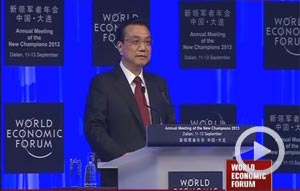Rail route to Europe improves freight transport
Updated: 2013-09-13 07:13
By Zhou Wa (China Daily)
|
||||||||
With shorter transport times and lower costs for freight, international rail lines linking central and western China with Central Asia have helped to improve connectivity and trade between the regions.
Starting in Chongqing, the Chongqing-Xinjiang-Europe International Railway passes through Xi'an, Lanzhou, Urumqi and the Alataw Pass, where it enters Kazakhstan, before continuing through Russia, Belarus and Poland, finally ending in Duisburg, Germany.
Stretching 11,179 kilometers, it takes just 16 days on average to transport goods from China to Europe by rail, 20 days fewer than by sea from China's eastern ports, making rail ideal for goods with a shorter shelf life.
The cost is one-fifth that of transporting cargo by air, and there is just one customs inspection along the whole route between Chongqing and Central Asia. Since it began operating in 2011, the cost of transporting goods on the line has also fallen, from 80 cents per 22 metric tons of cargo for every kilometer, to 70 cents.
Goods transported along the route include electronics, cars, and medical equipment.
It has been compared with the second Eurasian Continental Bridge, a train line that starts at Lianyungang in East China's Jiangsu province and passes through the Alataw Pass in Xinjiang before ending at Rotterdam in the Netherlands.
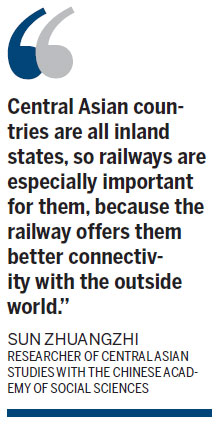
The Chongqing-Xinjiang-Europe line has provided a boost to Chongqing's economy. According to Yuxinou Logistics, which provides logistics services along the railway, from January to May this year, freight transported out of Chongqing rose 5.9 percent, and freight into the city rose 8.3 percent.
The line links South China's manufacturing hub and Southwest China's industrial belt with European markets. Along the route into Europe is Nizhny Novgorod, a major transportation and distribution hub in Russia.
With the rapid development of Sino-Russian economic and trade relations in recent years, an increasing range of Chinese goods have been distributed through Nizhny Novgorod Railway Station, with an average annual growth of 8 percent.
Of the 2,627 containers that passed through the station in the first half of this year, 846 came from China, carrying building materials, cars, groceries and chemical products.
Kazakh crossroads
Meanwhile, the railway has also received praise from officials in Kazakhstan.
"It changes the transportation networks in Kazakhstan and turns the country into the crossroads connecting China and Russia as well as Europe," said a vice-president of Kazakhstan state railway company KTZ.
The railway is very important for Kazakhstan, and the country will take further measures to tap its potential, including improving the efficiency of customs clearance and bringing in more powerful train engines, he said.
According to the Central Asian news provider TREND, at a meeting in May, the customs authorities of China and Kazakhstan agreed to establish a system for conducting customs clearance and control along the railway line. The two customs authorities aim to develop a strategic plan of cooperation for the 2014-18 period, it said.
"Economic cooperation and investments between China and Central Asian countries have developed very fast in recent years, which helps increase demand for better and faster logistics of those countries," said Sun Zhuangzhi, a researcher of Central Asian studies with the Chinese Academy of Social Sciences.
"Central Asian countries are all inland states, so railways are especially important for them, because the railway offers them better connectivity with the outside world, so that they can better take part in global economic cooperation," he said.
In addition, the Chongqing-Xinjiang-Europe railway allows those Central Asian countries to gain access to the ports of China as well as European countries, he said.
Challenges ahead
Despite its apparent success, the line faces a few challenges in the years ahead.
A steady stream of imports and exports is required to keep the Chongqing-Europe railway going, but there are currently few exports from European countries. Chongqing is trying to solve this by promoting the line to Europe, and there is no guarantee of success.
There is also some competition with other lines that provide similarly low-cost overland transport to Europe. A line linking Asia and Europe was launched in July, running from Zhengzhou, a business and logistics center in Central China, to Hamburg, Europe's second largest port.
The route reaches Germany via Kazakhstan, Russia, Belarus and Poland, taking 18 days to cover the 10,214 km, more than twice as fast as by sea. It is also about 80 percent cheaper than air transport and significantly cheaper than going by road.
Like the line linking Chongqing and Duisburg, the Zhengzhou-Europe railway has to change gauges twice, a feat that is accomplished by crane.
The first transfer is a change to the Russian broad gauge line at the Alataw Pass on the border between China and Kazakhstan. The second is a transfer to standard gauge at the Poland-Belarus border.
The gauge transfer and technical service is provided by DB Schenker, the transport and logistics arm of Germany's national railway Deutsche Bahn, through its service network in Central Asia and Eastern Europe after the trains leave China.
The first freight train along this route had 41 containers, including 11 carrying vehicle parts, industrial yarn, high-end shoes and clothing on route to Hamburg, and a container of clothes destined for Rotterdam. The goods were valued at $2.33 million.
zhouwa@chinadaily.com.cn
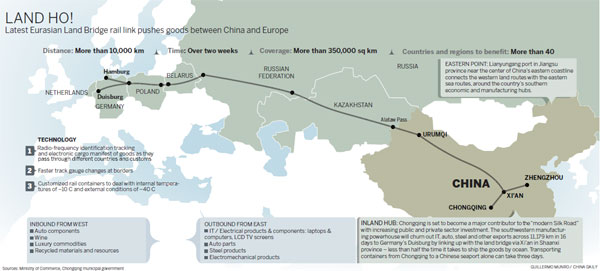
(China Daily USA 09/13/2013 page3)
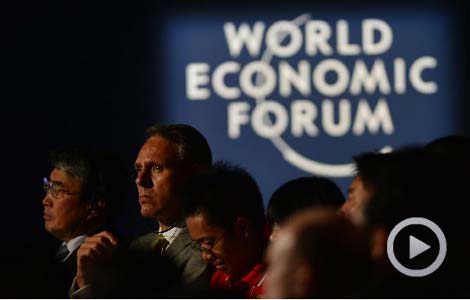
 Experts discuss Chinese premier's economic plan
Experts discuss Chinese premier's economic plan
 Voyager 1 has left solar system: NASA
Voyager 1 has left solar system: NASA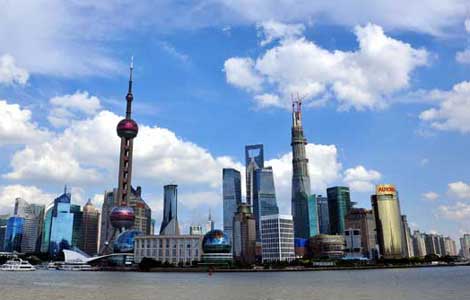
 Time of opportunities, challenges
Time of opportunities, challenges
 Plenty of fizz
Plenty of fizz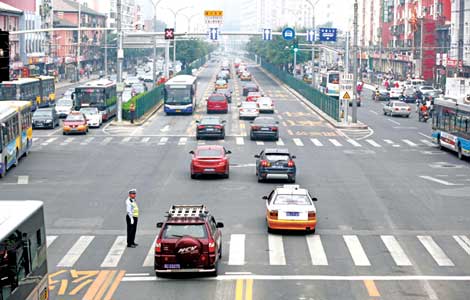
 Traffic about-face seeks to ease congestion
Traffic about-face seeks to ease congestion
 Another iPhone4 explodes while charging
Another iPhone4 explodes while charging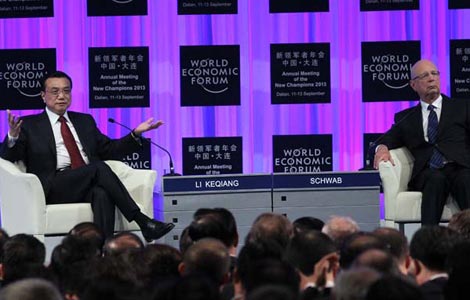
 Premier stresses transformation of the economy
Premier stresses transformation of the economy
 Soyuz capsule returns from space station
Soyuz capsule returns from space station
Most Viewed
Editor's Picks

|

|

|

|

|

|
Today's Top News
WB head to discuss climate in China visit
US moves against China firms criticized
3 sentenced to death for Xinjiang terror attack
Xi welcomes talks on Iran
Assad agrees to hand over chemical weapons
Time of opportunities, challenges
China sets caps for rare earths exploration
Ending non-tariff barriers benefits global economy
US Weekly

|

|
